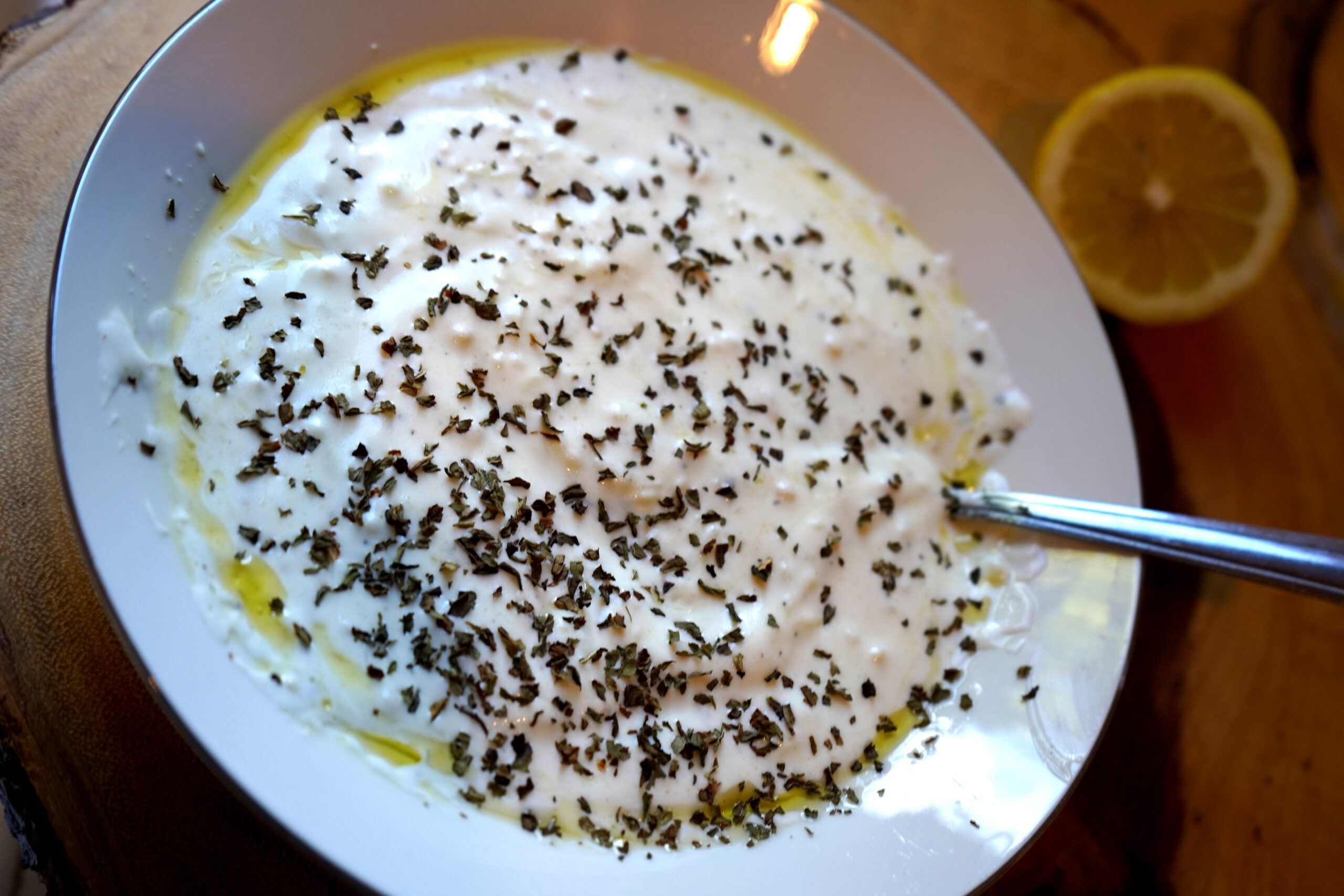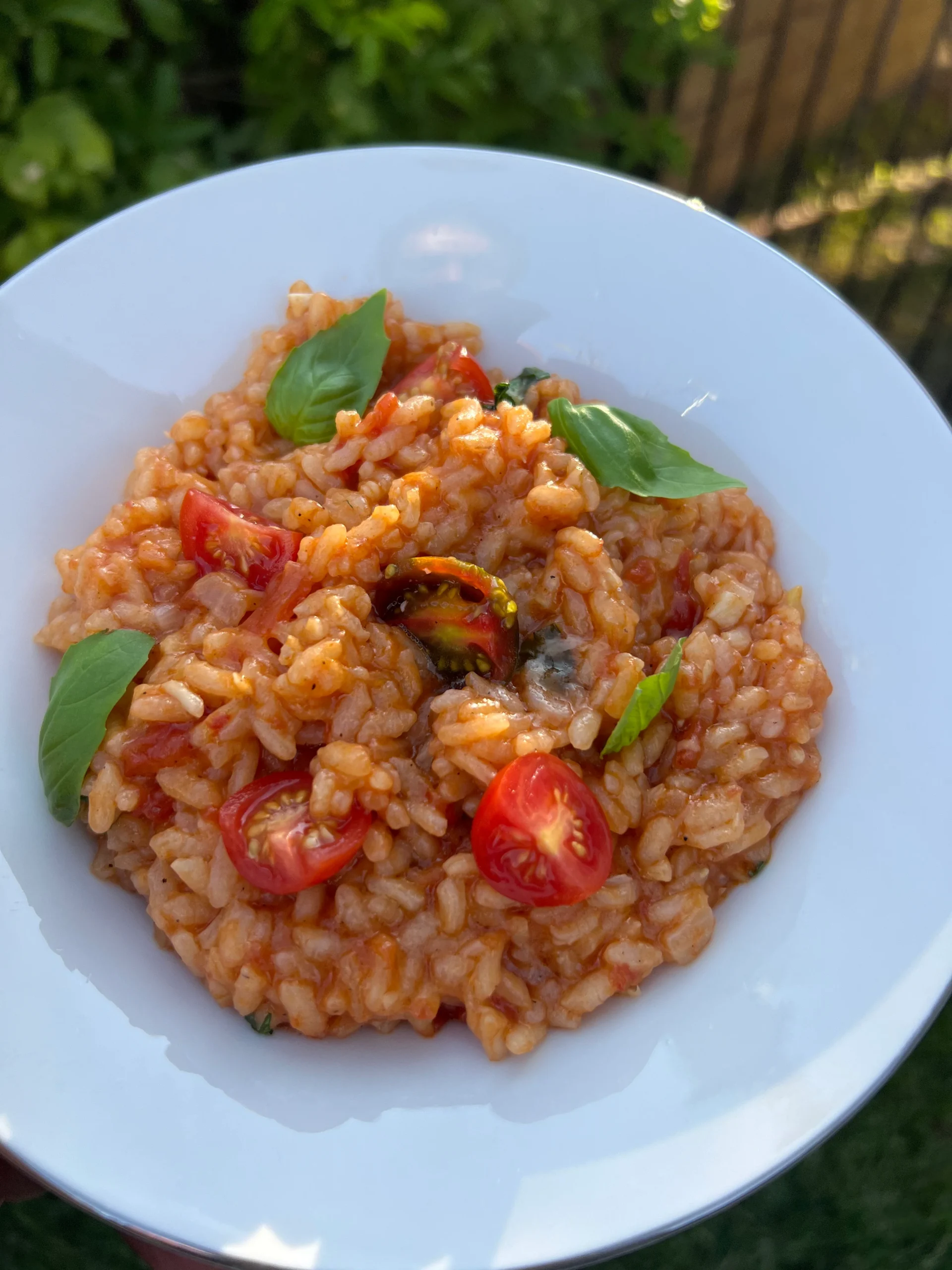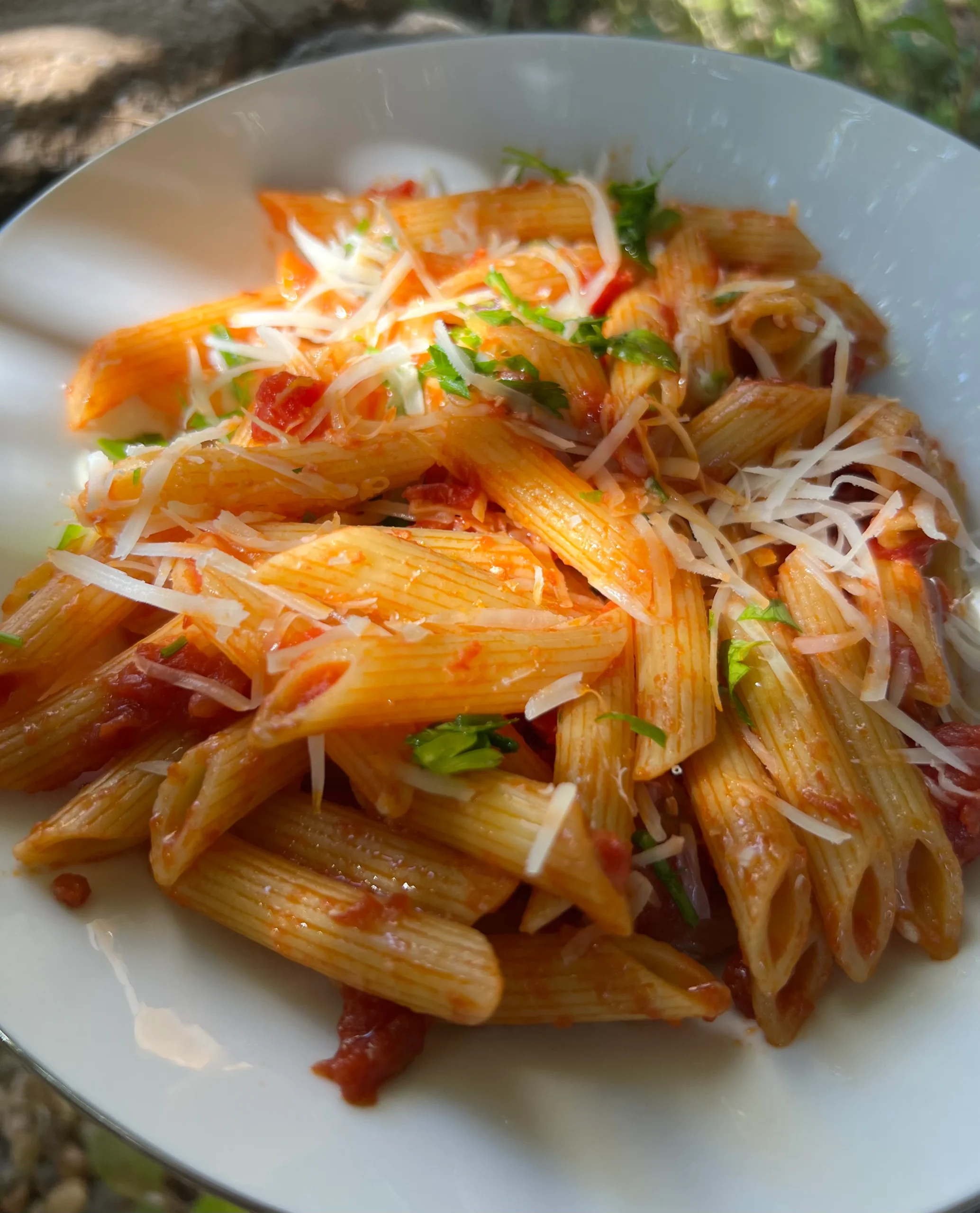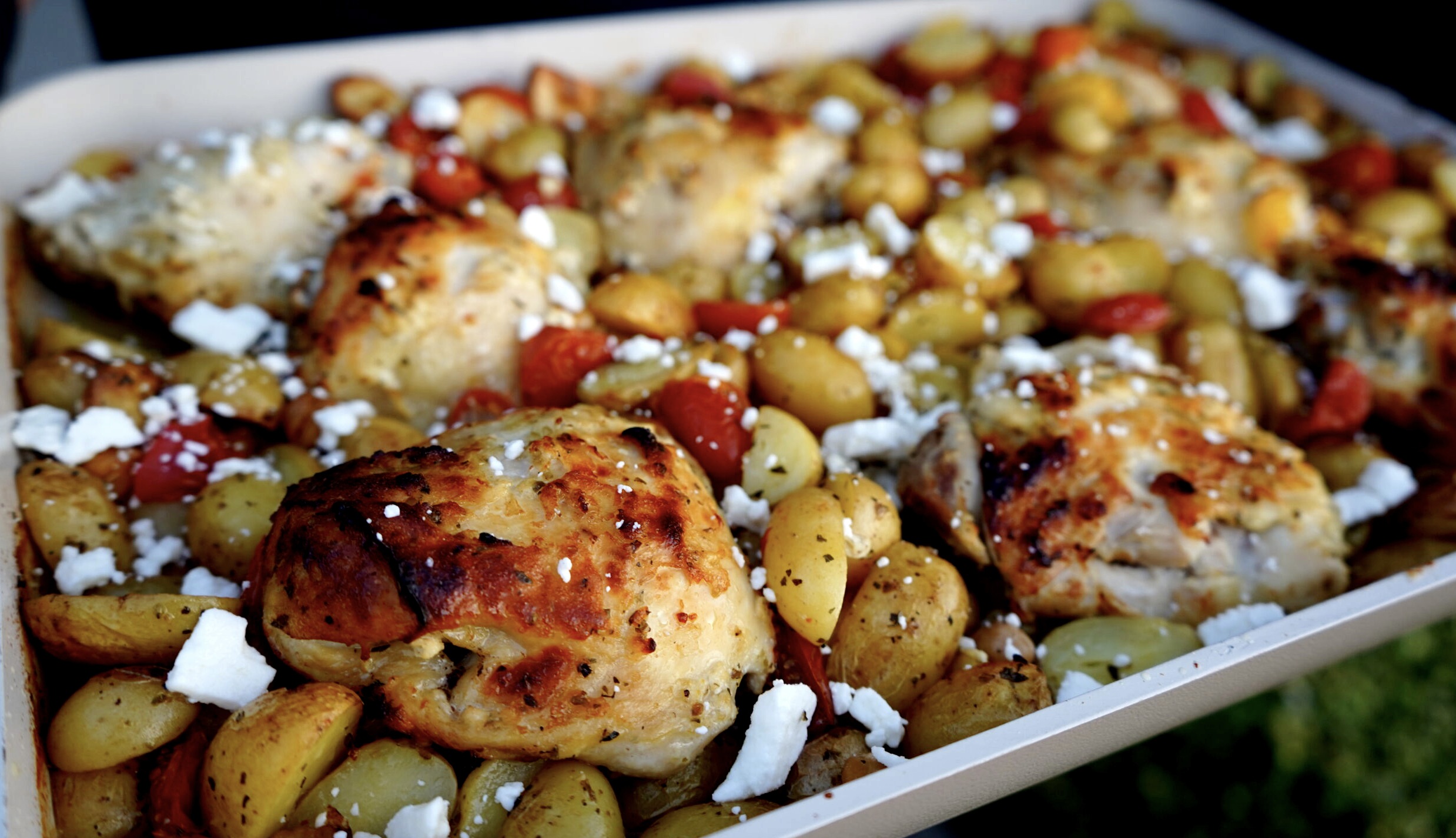Easy Greek Tzatziki Sauce Recipe You’ll Want on Everything
Easy Greek Tzatziki Sauce Recipe
In Greece, easy Greek tzatziki sauce isn’t just a sauce — it’s part of the table’s heartbeat. Every summer meal seems to have a bowl of it, cool and creamy, waiting to be scooped with warm pita or spooned over grilled meats. I remember the first time I had it in a seaside taverna: the cucumbers were so crisp they tasted like they’d been picked that morning, and the yogurt was thick enough to hold a spoon upright. A squeeze of lemon, a drizzle of olive oil, a handful of dill — nothing fancy, just honest ingredients layered together in perfect harmony.
Tzatziki feels like sunshine in food form: refreshing, simple, and endlessly versatile. It’s one of those recipes that connects you instantly to the Mediterranean way of eating — light, bright, and meant to be shared. And it’s not just me romanticizing it; Greeks truly see tzatziki as a staple, something that belongs on the table as naturally as bread or water. Ask anyone who has traveled through Greece and they’ll tell you: there is almost always tzatziki, like an old friend who shows up without needing an invitation.
Why This Easy Greek Tzatziki Sauce Is Special
What makes easy Greek tzatziki sauce so special is its humility. Think about it: it’s cucumbers, yogurt, garlic, olive oil, and herbs. That’s it. Ingredients you probably already have in your kitchen right now. But somehow, when those few elements are combined the right way, they become more than the sum of their parts. Thick Greek yogurt — strained so it’s rich and tangy — forms the base. Grated cucumber brings freshness and crunch, the garlic adds a bite that cuts through the creaminess, and olive oil ties it all together with its golden silkiness. Add a squeeze of lemon or vinegar for brightness and a shower of dill or mint for fragrance, and you’ve got magic.
And not the kind of magic that requires a culinary degree. It’s the kind of magic that comes from patience, from letting the cucumber drain so it doesn’t water everything down, from pounding garlic into a paste so its sharpness mellows into the yogurt. Simple steps, yes, but ones that reward you if you respect them.
The History of Easy Greek Tzatziki Sauce
The history of easy Greek tzatziki sauce stretches back further than most of us realize. Its roots can be traced to the Ottoman Empire, where yogurt sauces flavored with garlic and herbs were common across the region. Variations of tzatziki appear in Turkish, Middle Eastern, and Balkan cuisines — cacık in Turkey, mast-o-khiar in Iran, tarator in Bulgaria. Each version tells the same story: people using what they had — yogurt, cucumbers, herbs — to create something cooling and nourishing for hot climates.
But Greece made tzatziki its own, folding it so deeply into the culture that today it’s hard to imagine a Greek table without it. Walk into a traditional taverna in Athens, and you’ll see it alongside olives, bread, grilled fish, souvlaki, and fried zucchini chips. Order a gyro on the street, and tzatziki will be there, tucked into the pita, soaking into the meat, cooling the heat of the spices. It’s as essential as the Acropolis looming in the background.
Making Easy Greek Tzatziki Sauce at Home
I think what I love most about making easy Greek tzatziki sauce at home is how it embodies the Mediterranean philosophy of food. It’s not about excess, not about twenty ingredients competing for attention, but about a few things done well. It’s a dish that doesn’t need makeup. The cucumbers don’t hide behind heavy cream. The yogurt doesn’t get masked with sugar. Everything shines for what it is. It’s a reminder that the Mediterranean diet isn’t some trend dreamed up by nutritionists — it’s a way of living that has always valued simplicity, balance, and freshness. A sauce like tzatziki is proof that you don’t need complicated techniques to create something unforgettable. You just need to respect the ingredients.
Serving Ideas for Easy Greek Tzatziki Sauce
And let’s be honest, easy Greek tzatziki sauce is also fun. It’s playful food. You dunk, you spread, you swipe your pita through it and inevitably get some on your fingers. Kids love it because it feels like a snack. Adults love it because it transforms plain grilled chicken or fish into something restaurant-worthy. When it’s hot outside, tzatziki cools you down. When the table is crowded with dishes, tzatziki is the one everyone keeps reaching for, like the glue holding the meal together. It’s the unsung hero of mezze, the quiet superstar who doesn’t need a spotlight because it knows it will be gone before the lamb chops even hit the table.
That first time at the taverna in Greece, I remember laughing because the bowl of tzatziki disappeared faster than the main course. There we were, a group of travelers trying to pace ourselves through a long lunch, but the pita basket kept getting refilled, and the tzatziki kept vanishing. At some point, one of the waiters set down a second bowl without us even asking, a kind of unspoken understanding that no one leaves the table unsatisfied. That’s the kind of generosity that defines Greek food. It’s not about serving you the fanciest plate — it’s about making sure you feel full, cared for, and part of the family, even if you’re just passing through.
Back home, easy Greek tzatziki sauce quickly became my secret weapon. You know those nights when you don’t feel like cooking but still want something that tastes like effort? Enter tzatziki. Slice some cucumbers, stir it into yogurt with garlic and dill, drizzle olive oil on top, and suddenly leftover chicken becomes Mediterranean, roasted vegetables turn into mezze, and plain rice feels like part of a feast. I’ve served it at barbecues where burgers shared the table with pita, and guess what?
People dipped their fries in tzatziki instead of ketchup and never looked back. I’ve brought it to potlucks where it sat modestly next to seven-layer dips and spinach-artichoke casseroles, and somehow it was the first bowl scraped clean. That’s tzatziki — it doesn’t shout, it doesn’t need a headline, but it always wins.
There’s also something incredibly grounding about making it yourself. Grating cucumbers and squeezing out the water with your hands is oddly satisfying, almost meditative. Crushing garlic with a pinch of salt until it melts into a paste makes you feel like you’re in on some ancient kitchen secret. When you stir it all together and taste that first cool, garlicky bite, you realize you’re part of a tradition that’s been carried on for centuries. You may not be sitting by the Aegean Sea, but for a moment, with a spoonful of easy Greek tzatziki sauce, you can close your eyes and almost hear the waves.
Every time I serve it, I think of the Greek table, of how food there isn’t just about feeding yourself but about connecting with others. Tzatziki isn’t something you eat alone at your desk. It belongs at a table with friends, with conversation, with laughter echoing into the night. It belongs outdoors in the summer, under string lights, next to glasses of crisp white wine or pitchers of ouzo. It belongs in memories, like mine from that little seaside taverna, where the yogurt was thick, the cucumbers crisp, and the sea breeze carried hints of salt and lemon.
Tzatziki, at its core, is proof that food doesn’t need to be complicated to matter. It can be as simple as yogurt, cucumber, and garlic, and yet it becomes a dish that defines a cuisine, a culture, and even a way of life. It’s refreshing, it’s versatile, it’s timeless. And maybe that’s why it feels so essential — because it teaches us the beauty of restraint, the joy of freshness, and the importance of sharing. Like sunshine in food form, it brightens whatever it touches. And long after the pita is gone and the bowl is empty, easy Greek tzatziki sauce lingers, just like Greece itself, impossible to forget.
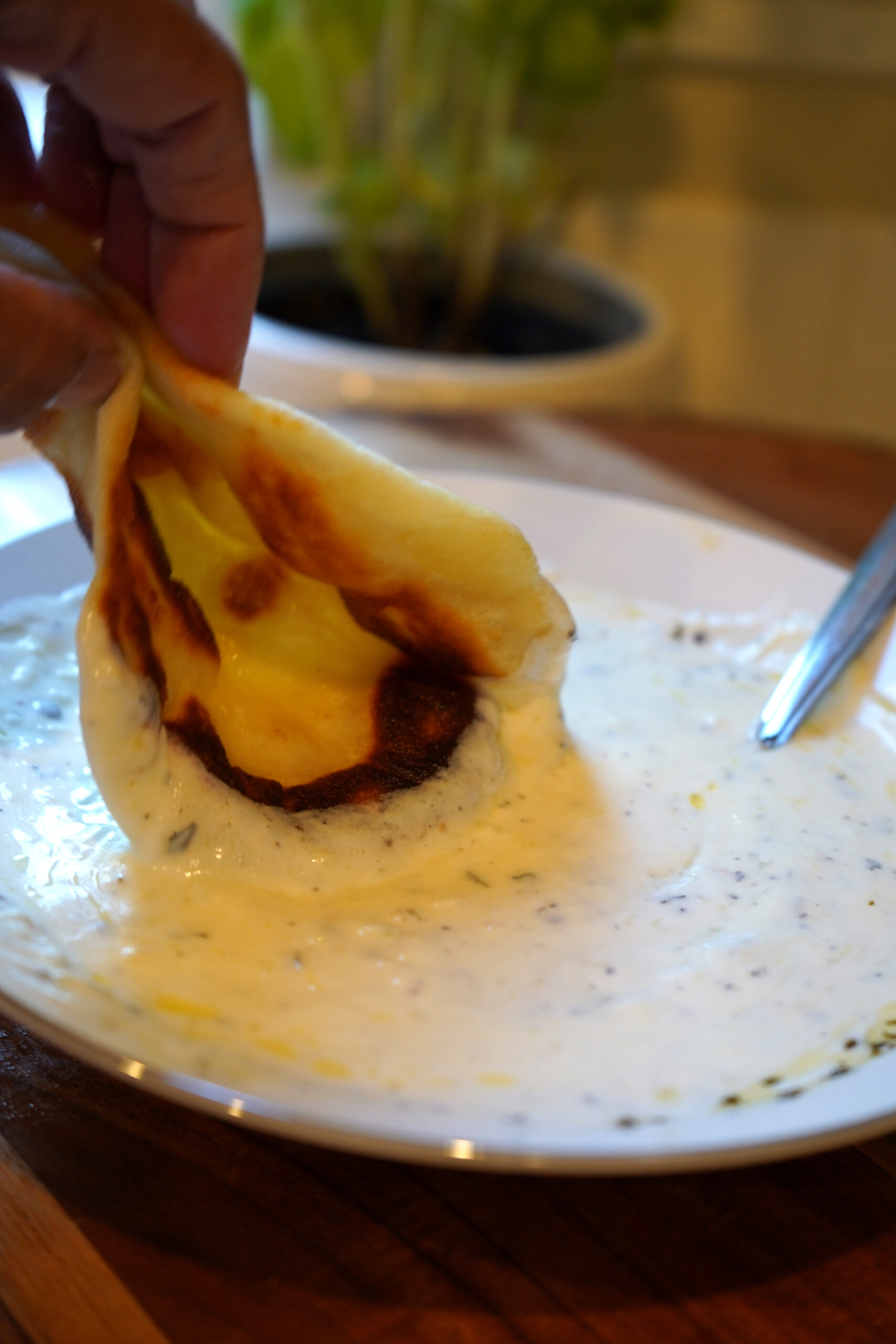
Greek Tzatziki Sauce
Ingredients
Method
- In a large bowl, combine yogurt, garlic, salt, pepper, and lemon juice.
- Fold in the grated cucumber.
- Drizzle in the olive oil and mix until smooth and creamy.
Notes
- Raw garlic gets stronger as it sits. If you want a milder flavor, roast the garlic first or use just 1–2 cloves.
- To prep the cucumber squeezing out the liquid is key to avoiding a watery dip. You can wrap the grated cucumber in cheesecloth or a clean towel and press.
- For a creamier dip, use full-fat Greek yogurt. For a lighter dip, stick to 0–2% yogurt. Vegan yogurt/cream cheese will give it a thicker, tangier profile.

